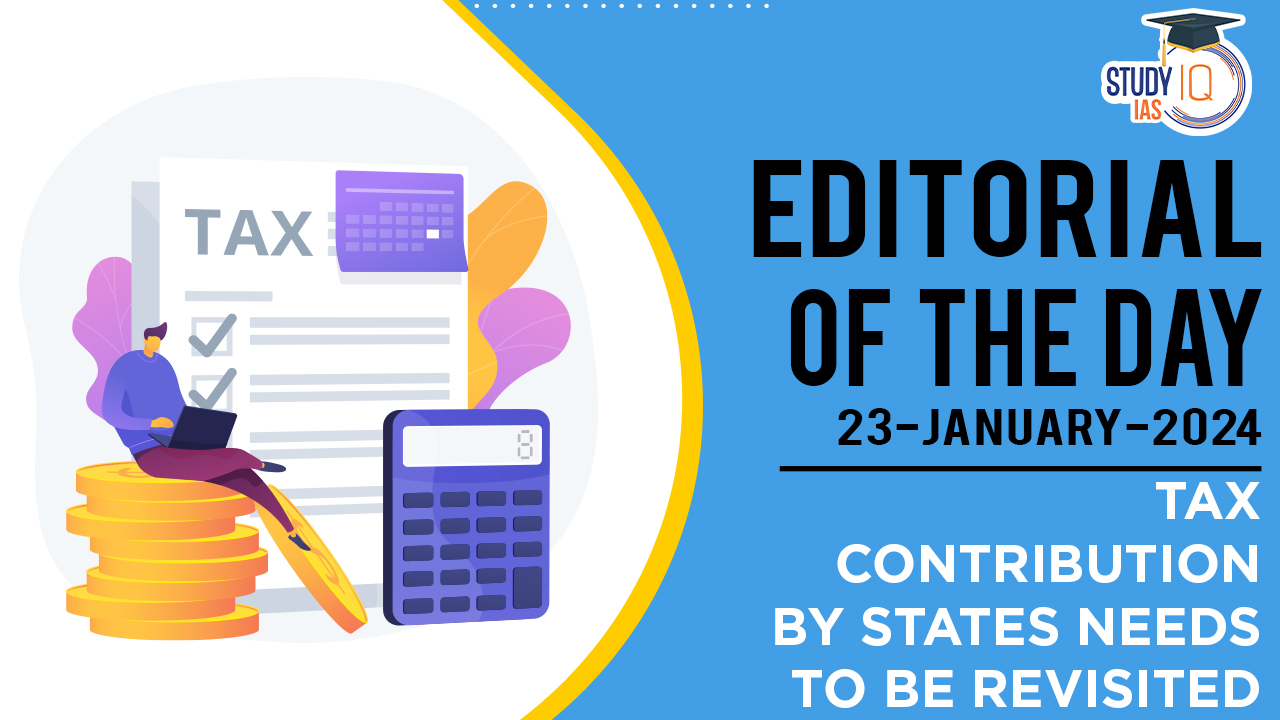Table of Contents
Context: GST offers a chance to fairly measure state contributions (via tax & fuel consumption) and reward them financially. This should be considered for future distribution formulas.
Role And Evolution Of Finance Commission
- The Finance Commissions primary role is:
- To recommend the proportion of the Union tax revenues to be assigned to States and,
- To recommend the share of each State in the assigned tax revenue.
Historical Context
- Balancing Equity and Efficiency: The Commission aims to strike a balance between equity (favouring financially weaker or high-expenditure States) and efficiency (rewarding States for effective tax collection and spending) in distributing Union tax revenue to states.
- Shifts in Tax Revenue Distribution: Earlier, States’ shares were limited to personal income tax and Union excise duties. Post-2000, this expanded to include all Central tax revenues.
We’re now on WhatsApp. Click to Join
Distribution Formula Dynamics
- Weights and Indicators: Early Commissions gave a 10-20% weight to tax collection efficiency, while 80-90% was for population-based equity indicators. Union excise duties were distributed based on consumption statistics, which were hard to track.
- Post-10th Finance Commission Changes: A unified formula for income tax and Union excise duties was adopted, with over 75% weight given to equity indicators.
- 2000s Adjustments: Efficiency indicators like tax effort and fiscal discipline were introduced, with a combined weight of around 15%.
- 15th Finance Commission Approach: This Commission allocated 2.5% weight to tax effort and 12.5% to demographic performance, with the remaining 85% for equity indicators like per capita income and population.
Advocacy for GST Inclusion in the Formula
- GST as an Efficiency Measure: GST, being a consumption-based tax, offers a stable and objective measure of a State’s tax contribution, making it a suitable efficiency indicator.
- Stability and Accuracy: GST’s unified structure ensures minimal variation in States’ tax efforts, reflecting the true economic base of each State.
- Petroleum Consumption as an Indicator: Union excise duty and sales tax on petroleum products, outside GST, also reflect States’ contribution to the national exchequer.
- Rationale for Inclusion: Both GST and petroleum consumption are stable measures of a State’s income and hence its tax contribution, justifying their inclusion in the distribution formula.
Proposal for the 16th Finance Commission
- It’s recommended that the 16th Finance Commission debate and possibly assign at least a 33% weightage to the combined efficiency measures of GST revenue and petroleum consumption in the distribution formula.


 Securities Markets Code Bill 2025: Towar...
Securities Markets Code Bill 2025: Towar...
 Weakly Interacting Massive Particles (WI...
Weakly Interacting Massive Particles (WI...
 India–Oman Trade Deal: CEPA Signed to ...
India–Oman Trade Deal: CEPA Signed to ...

























